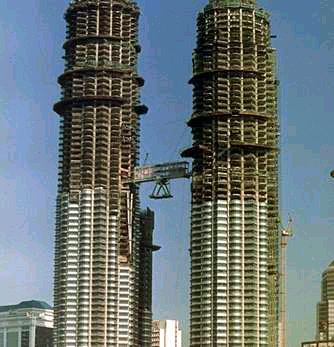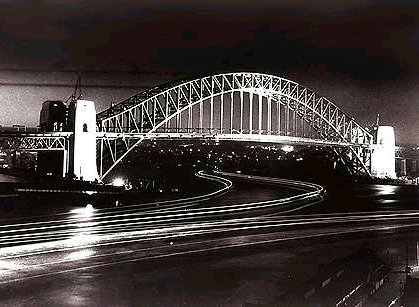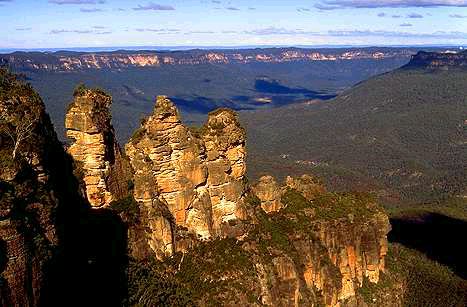 
|
The Amazing Adventures of Caitlin Topham
Bangkok Penang Kuala Lumpur Sydney Blue Mountains Melbourne
 
|
The Amazing Adventures of Caitlin Topham
Bangkok, Thailand
Bangkok, the capital and chief port of Thailand, is located on the Chao
Phraya River, 40 km. (25 miles) upstream from its outlet into the Gulf of
Thailand. It has a population of approximately six-million. Rice, rubber,
tin, and timber are the chief exports. Originally a small port serving
Ayutthaya the former capital of Siam, Bangkok became capital in 1782
when the founder of the Chakri dynasty, King Rama I, built his palace
there. The city is rich in Thai culture and is a popular tourist
destination. Its principal modern industries include rice mills, oil
refineries, sawmills, shipyards, and textile factories. There is also a
famous trade in jewellery.


The Bangkok Sunset

Patong Bay, Phuket Island, Thailand
Though not a stop on Caitlin's travels, it should be fairly similar
to the islands she's been visiting
Penang, Malaysia
Penang is a popular resort island off the west coast of the Malay
peninsula. In 1786 it was ceded to the East India Company as a
British colony by the sultan of Kedah. Known as Prince of Wales
Island until 1867, it united with Malacca and Singapore in a union
of 1826, which in 1867 became the British colony called the
Straits Settlements. It joined the federation of Malaya in 1948.
(Malay = betel nut island.) At 13.5 km. (8.4 miles), the Penang
Bridge which links the island to the mainland is the largest in
Asia.
Nowadays Penang is a state of Malaysia consisting of this island and a coastal strip on the mainland with an area of 1,044 sq. km. (403 sq. miles) and population (1990) of 1,142,200. It's capital is George Town (on Penang Island). The mainland strip, formerly the province of Wellesley, was first united with the island in 1798 as part of a British colony.

Kuala Lumpur
Kuala Lumpur, the capital city of Malaysia, lies at the junction of
the Klang and Gombak rivers in the south-west of the Malay Peninsula
and has a population (1991) of 1,145,000. Founded in 1857 by Chinese
tin miners, it became capital of the Federated Malay States in 1896.
It is a major transportation and commercial city at the centre of a
rubber-growing and tin-mining region.


The skybridge linking the 88-story Petronas Twin Towers in Kuala Lumpur, Malaysia reached its
final position at levels 41and 42 in August 1995. The bridge, 170 metres above
street level, was mechanically raised by Malaysian Prime Minister Mahathir Mohamad
on 7 August, 1995.
Sydney, Australia
Sydney is the capital of New South Wales, the oldest and largest city and
chief port of Australia; pop. (1991) 3,097,950. It was named after
Thomas Townsend, Lord Sydney (1733-1800) who was responsible for
the establishment of a penal settlement in New South Wales. A convict
settlement, originally considered for Botany Bay, was located in 1788
further north at Sydney Cove, an inlet of the magnificent natural harbour
of Port Jackson. By 1820 the convict settlement had given way to a small
Regency city. Sydney and its beaches - such as Bondi - attract large
numbers of tourists. Since World War II there has been a considerable
influx of new residents from Europe and South-East Asia. The city is a
major cultural centre with three universities, theatres, opera house,
museums, and art galleries. It is also Australia's principal industrial
centre with shipyards, oil refineries, automobile, electronics, and
chemical plants, and textiles. Its chief landmarks are the Sydney Tower,
Harbour Bridge, and Opera House.


Sydney Harbour Bridge
This gigantic steel arc, a wonderful feat of engineering, is Harbour Bridge, the longest single-span bridge in the world which extends across Sydney Harbour, Sydney, Australia.

Sydney Opera House
Blue Mountians
The Blue Mountains are a section of the Great Dividing Range in New South Wales, Australia. The mountains appear blue because the fine droplets of oil that are dispersed from the Eucalyptus trees cause the blue light rays of the sun to be scattered more effectively. Now a popular resort area, the range was first traversed in 1813 by Blaxland, Lawson, and Wentworth. The Blue Mountains National Park, which extends over an area of 2,160 sq. km. (834 sq. miles), is a sanctuary for kangaroos, wallabies, platypuses, and many species of bird.

Melbourne, Australia
Melbourne - the capital of Victoria, south-east Australia, on the Bass Strait opposite Tasmania; pop. (1991) 2,762,000. Founded in 1835 and named after the British Prime Minister William Melbourne, it became state capital in 1851 and was capital of Australia from 1901 until 1927. Situated on Port Philip Bay, it is a major port, financial, commercial, and industrial centre, and the second-largest city in Australia. The Melbourne Cup horse-racing event is held annually in November. Melbourne has two universities: Monash (1958) and La Trobe (1964) and a famous Botanical Gardens (1845).